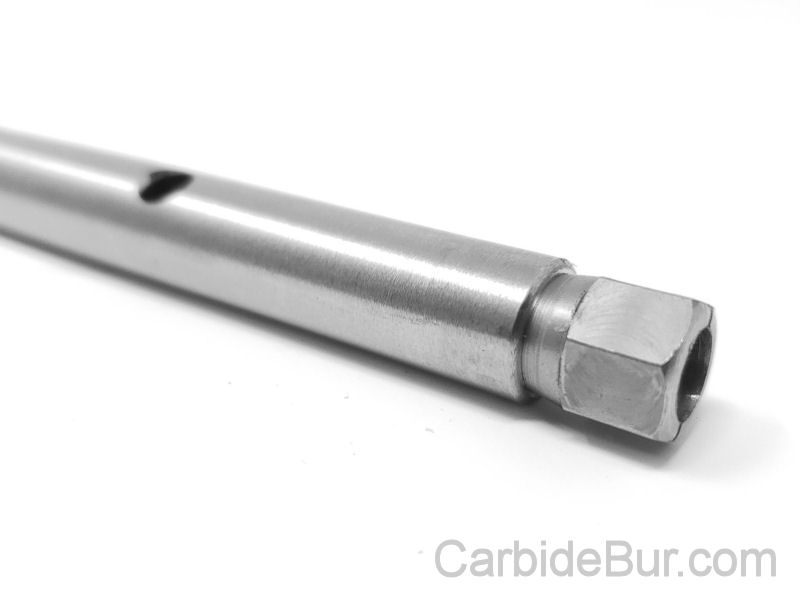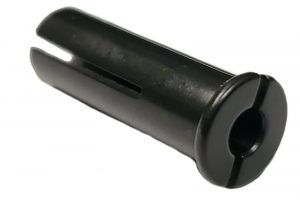What is Carbide Bur Deburring?
What is carbide bur deburring? To understand this process, which happens during the manufacture of metal enclosures, we must first learn the meaning of the word bur. Although it also refers to “a rough humming sound” and “a prickly seed case or flower head that clings to clothing and animal fur,” for this case, the word bur refers to “a rough edge or ridge left on an object (especially of metal) by the action of a tool or machine”. So what is deburring? As you would guess, deburring is a process during which this unwanted material is removed with tools.
Metal must go through an extensive manufacturing process in order to be formed into a serviceable, efficient enclosure. Machining operations commonly employed include grinding, drilling, milling, engraving, and turning. These procedures may leave behind burs, of which there are three types: Poisson, rollover, and breakout. Removing these unwanted imperfections is a process called deburring.
PURPOSE OF DEBURRING
Burs can impact an enclosure’s functionality, longevity, safety, and effectiveness. For example, burs can cause all of the following issues:
Fastener and material problems
Decreased resistance to fractures (due to increased stress in certain areas)
Shortened fatigue life (stress cycles an object or material can handle before failure)
Improper seating of fasteners, causing damage to the fastener or assembly
Material failture due to cracks
Increased risk of corrosion (possibly due to varying thickness of material)
Concentrated electrical charge, risk of static discharge
Unwelcome friction and heat
Issues with lubrication due to increased wear at interfaces
Unsafe handling
Deburring is a valuable component of the manufacturing process, because it eliminates the many risks posed by burs. By cleaning up the edges of the metal after welding, manufacturers prevent dangerous accidents, improve the product’s ability to work properly, and enhance its aesthetic appeal.
Need a longer reach?
Try our 4″ and 9″ extension tool for your carbide bur bits
DEBURRING TECHNIQUES
Manufacturers use a variety of techniques to provide high-quality, burr-free finishes. Below we have summarized a few of the most common deburring methods.
Manual Deburring: Manual deburring, typically completed by experienced craftsmen, is the most common method due to its customizability, flexibility, and low cost. The manufacturer can immediately inspect the results and make improvements as necessary. However, this process does require a significant time investment.
Electrochemical Deburring: For the mass production of extremely difficult materials, precision work, and hard-to-reach spots, many manufacturers use electrochemical machining (ECM) for deburring. A combination of electricity and a salt or glycol solution dissolves the burrs without impacting the surrounding material.
Thermal Deburring: The thermal energy method (TEM) can also remove hard-to-reach burs, and it can target burs on multiple surfaces simultaneously. This fast-paced process requires an explosive gas mixture, which provides thermal energy that burns off burs.
Mechanical Deburring: You can remove burrs mechanically by either grinding off the burr or rolling the edge into itself. This method provides high-quality finishes in a fraction of the time it takes to deburr by hand.
Try our 1/4” to 1/8” Collet Reducer
Allows you to use 1/8” shank carbide bits in your 1/4” die grinder
All our USA made carbide bur cutting tools ship SAME DAY ordered by USPS Mail with online tracking.
We can also dropship the SA-11 carbide bur die grinder bit, if interested in joining our FREE dropship program.
We accept debit and all major credit card payments including Visa, MasterCard, Discover, American Express and PayPal. Fast and easy secure checkout with no account or login required. If you have any questions, visit our FAQ page or contact us here.

Follow us on Facebook, Twitter and Instagram
Return to CarbideBur.com
Carbide Burs – 1/4″ on 1/8″ Shanks – Accessories – Aluminum Cut – Bur Sets – End Mills – Long Shank – Solid Burs





